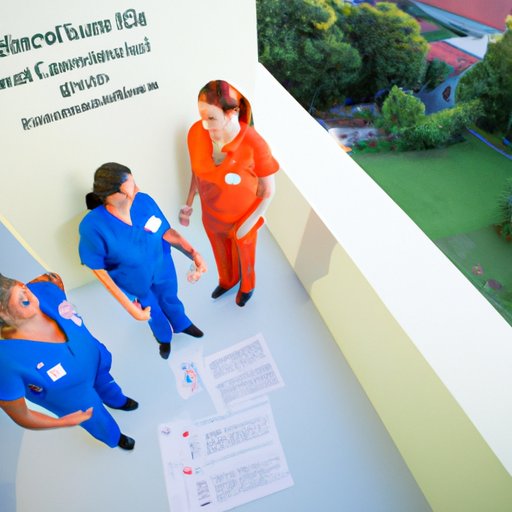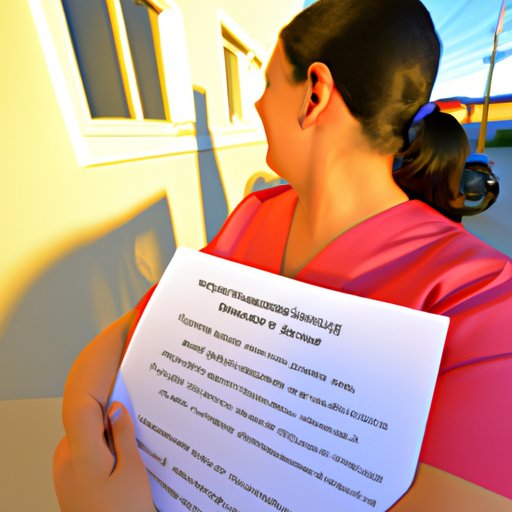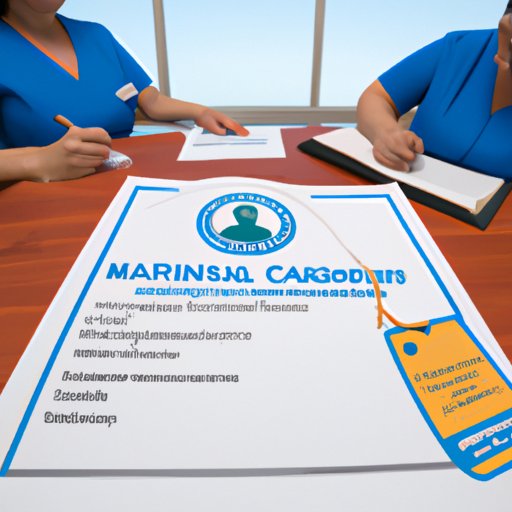Introduction
Certified nurse midwives (CNMs) are advanced practice registered nurses who provide care for women throughout their lifespan. CNMs specialize in reproductive health, pregnancy, labor and delivery, and postpartum care. They are an important part of the healthcare system, providing high quality and cost-effective care to women. Becoming a certified nurse midwife requires research into state requirements, understanding national certification requirements, taking necessary education and training, participating in clinical experience, preparing for the exam, and maintaining certification after receiving it.

Overview of Certified Nurse Midwifery
CNMs are primary healthcare providers who focus on preventive care and the promotion of healthy lifestyles. They provide care for women from adolescence through menopause and beyond. CNMs provide gynecological exams, family planning counseling, prenatal care, labor and delivery assistance, and postpartum care. They also offer counseling and support for women facing difficult decisions regarding their reproductive health. According to the American College of Nurse Midwives, “CNMs/CMs practice in hospitals, birth centers, homes, and other settings and collaborate with other health professionals to provide quality care.”

Benefits of Becoming a Certified Nurse Midwife
There are many benefits to becoming a certified nurse midwife. CNMs are in high demand and the job outlook is very positive. According to the Bureau of Labor Statistics, the employment of nurse midwives is expected to grow by 14% between 2018 and 2028. This is much faster than the average for all occupations. Additionally, CNMs are very well compensated for their work. The median annual wage for nurse midwives was $108,810 in May 2018.
Research Requirements for Certification
The first step in becoming a certified nurse midwife is researching the requirements for certification. Each state has different requirements for certification, so it is important to understand the specific requirements for the state in which you wish to practice. Additionally, there are national certification requirements that must be met. It is important to familiarize yourself with both state and national requirements before beginning the process of becoming certified.
Review State Requirements
The first step in researching the requirements for certification is to review the requirements for the state in which you wish to practice. Each state has its own requirements for licensure and certification, so it is important to understand the specifics of the state in which you plan to practice. For example, some states require a certain number of clinical hours or a specific type of degree in order to become certified. Additionally, some states have additional requirements such as background checks or proof of English proficiency. It is important to thoroughly research the requirements for the state in which you plan to practice in order to ensure that you meet all of the necessary criteria.
Understand National Certification Requirements
In addition to understanding the requirements for the state in which you wish to practice, it is also important to familiarize yourself with the national certification requirements. The American Midwifery Certification Board (AMCB) is the organization responsible for setting and enforcing the standards for nurse midwife certification. In order to become certified, candidates must meet the following requirements:
- Be licensed as a registered nurse in the U.S.
- Have a master’s degree from an accredited nurse midwifery education program.
- Successfully complete the AMCB certification exam.
It is important to understand these national requirements in order to ensure that you are prepared for the certification process.
Take Necessary Education and Training
Once you have researched the state and national requirements for certification, the next step is to take the necessary education and training. There are several options available for those looking to become certified nurse midwives.
Explore Educational Options
The first step is to explore the educational options available to you. Most nurse midwifery programs are graduate programs, so you will need to have a bachelor’s degree in nursing in order to apply. Additionally, some programs may require applicants to have a certain amount of clinical experience. It is important to research the specific requirements for each program before applying.
Consider Online or Distance Learning Programs
For those who are unable to attend traditional on-campus programs, there are online and distance learning options available. These programs allow students to complete their studies from the comfort of their own home. Additionally, some programs may offer flexible schedules, making them ideal for working professionals. It is important to research the various online and distance learning programs to find one that meets your needs.
Learn About Clinical Rotations
Many nurse midwifery programs include clinical rotations as part of their curriculum. Clinical rotations allow students to gain hands-on experience in a variety of settings. During clinical rotations, students work with patients under the supervision of a preceptor. Clinical rotations provide students with the opportunity to apply their knowledge and skills in a real-world setting. It is important to research the clinical rotations offered by each program to ensure that they meet your needs.
Participate in Clinical Experience
In addition to completing a nurse midwifery program, it is also necessary to participate in clinical experience in order to become certified. Clinical experience allows nurse midwifery students to gain practical experience in a variety of settings. Clinical experience provides students with the opportunity to apply the knowledge and skills learned in the classroom in a real-world setting.
Determine the Number of Hours Needed
The first step in participating in clinical experience is to determine the number of hours needed in order to become certified. The number of hours required varies from state to state and from program to program. It is important to research the specific requirements for the state and program in which you are enrolled in order to ensure that you complete the necessary hours.
Familiarize Yourself With Local Opportunities
Once you have determined the number of hours needed, the next step is to familiarize yourself with local opportunities. There are a variety of clinical settings in which nurse midwifery students can gain experience, including hospitals, birth centers, and private practices. It is important to research the various options available in your area in order to find the best fit for you.
Research Potential Supervisors
The final step in participating in clinical experience is to research potential supervisors. A supervisor is someone who can provide guidance and support during your clinical experience. It is important to research potential supervisors to ensure that they have the appropriate qualifications and experience. Additionally, it is important to make sure that the supervisor is willing and able to provide the necessary support and guidance during your clinical experience.
Prepare for the Exam
Once you have completed the necessary education and training, the next step is to prepare for the exam. The American Midwifery Certification Board (AMCB) administers the certification exam. The exam consists of multiple-choice questions and can be taken at a variety of locations across the country. It is important to thoroughly prepare for the exam in order to ensure success.
Know What to Expect From the Exam
The first step in preparing for the exam is to know what to expect. The AMCB website provides detailed information about the exam, including the topics covered and the format of the exam. It is important to familiarize yourself with this information in order to understand what to expect from the exam.
Find Study Materials and Resources
The next step is to find study materials and resources. The AMCB website provides a list of recommended study materials and resources. Additionally, there are a variety of study guides and practice tests available. It is important to find materials that are up-to-date and relevant to the exam.
Understand the Exam Format
Finally, it is important to understand the format of the exam. The exam consists of multiple-choice questions and is administered over a two-hour period. It is important to understand the format of the exam in order to properly prepare for it.

Maintain Certification After Receiving It
Once you have passed the exam and received your certification, the final step is to maintain your certification. In order to maintain certification, it is important to keep up with continuing education requirements and stay aware of changes in the field. Additionally, it is important to renew your certification periodically.
Keep Up With Continuing Education Requirements
The first step in maintaining certification is to keep up with continuing education requirements. The AMCB requires certified nurse midwives to complete a certain number of continuing education credits every year in order to maintain certification. It is important to research the specific requirements and make sure that you complete the necessary credits each year.
Stay Aware of Changes in the Field
The second step in maintaining certification is to stay aware of changes in the field. The field of nurse midwifery is constantly evolving and it is important to stay up to date on new developments. Additionally, it is important to keep up with current research in order to provide the most up-to-date care for patients.
Renew Certification Periodically
Finally, it is important to renew your certification periodically. The AMCB requires certified nurse midwives to renew their certification every five years. It is important to research the specific requirements for renewal and make sure that you renew your certification on time.
Conclusion
Becoming a certified nurse midwife requires research into state requirements, understanding national certification requirements, taking necessary education and training, participating in clinical experience, preparing for the exam, and maintaining certification after receiving it. It is important to thoroughly research the requirements and take the necessary steps in order to become a certified nurse midwife.
(Note: Is this article not meeting your expectations? Do you have knowledge or insights to share? Unlock new opportunities and expand your reach by joining our authors team. Click Registration to join us and share your expertise with our readers.)
